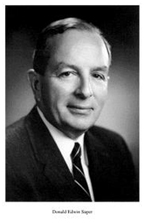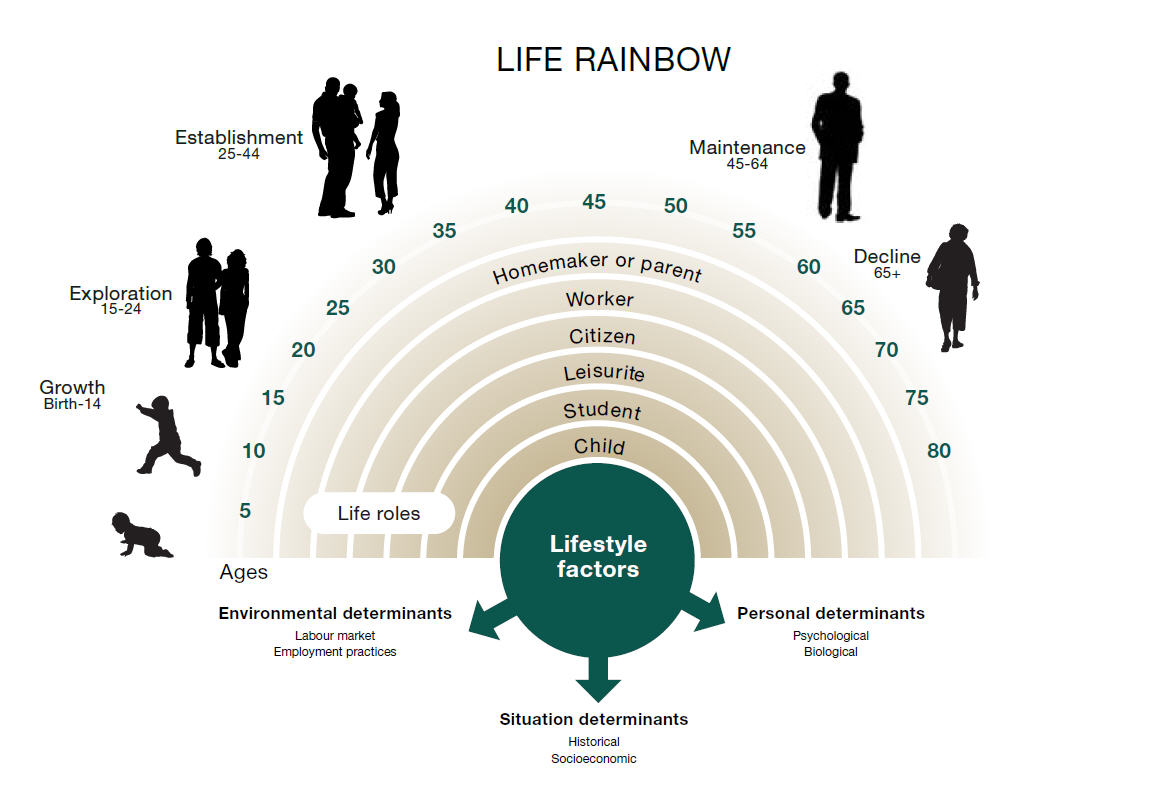Career Guide Online - Framework
Introduction
The Career Guide Online Interest Inventory (CGO-II) is a comprehensive self-assessment tool which enables individuals to anchor their career planning on a foundation of reliable self-generated data about a range of personal characteristics and skill sets that should help to influence choices and plans.
 The CGO-II enables individuals to determine how these characteristics relate to the known requirements and features of established job and career clusters. With this foundation, students, young adults, and mid- or late-career professional who are contemplating a career path or a career change will have the ability to assess themselves objectively and receive assistance in interpreting the results.
The CGO-II enables individuals to determine how these characteristics relate to the known requirements and features of established job and career clusters. With this foundation, students, young adults, and mid- or late-career professional who are contemplating a career path or a career change will have the ability to assess themselves objectively and receive assistance in interpreting the results.
The CGO-II is based on determinants and factors that have traditionally been used in attempting to determine the best fit between the individual and the employment prospects available in the short or long term. They constitute the acronym IAMA – Interests, Aptitudes, Motives and Abilities. If taken along with a personality inventory, as recommended for some clients, the acronym becomes PIAMA, with the "P" referring to personality. The development of the instrument is based upon a number of common themes that have influenced major career guidance, counselling, and employment theories. These themes are summarized below.
Relevant Theories
The CGO-II reflects the concept of "matching" that characterized the "trait and factor" theory of Frank Parsons, the American career guidance pioneer whose book Choosing a Vocation, was published in 1909 just after his death. He suggested that selecting a career should be based on individual self-knowledge coupled with information about different types of occupations. Self-knowledge involved identifying patterns of traits and using them to develop the individual's profile. This would then be matched to the known requirements of different occupations and the "traits" required for successful performance in them. The concept of career choice was seen essentially as seeking a good fit between the profiles of the individual and the occupation.
 Development of the CGO-II was also influenced by the theories of Dr. Donald Super, who published his first book about vocational guidance, Dynamics of Vocational Adjustment in 1942, which presented evidence of occupational choice as a process rather than an event in a person's life. His third publication, Appraising Vocational Fitness by Means of Psychological Fitness, appeared in 1975. Super was the first to describe career decision-making as a developmental process that spans one’s entire lifetime. This is particularly relevant today because of the multiplicity of new career options and the idea that the average individual will "change careers" at least three times. Super suggested that an individual has a "career self-concept" that is developed through interaction between personality, interests, experiences, skills, and values and he outlined the ways in which these features become integrated into various life roles. In an evolving process, new situations, new people, and changing occupational experiences create new interests and values, leading to the desire and necessity for change.
Development of the CGO-II was also influenced by the theories of Dr. Donald Super, who published his first book about vocational guidance, Dynamics of Vocational Adjustment in 1942, which presented evidence of occupational choice as a process rather than an event in a person's life. His third publication, Appraising Vocational Fitness by Means of Psychological Fitness, appeared in 1975. Super was the first to describe career decision-making as a developmental process that spans one’s entire lifetime. This is particularly relevant today because of the multiplicity of new career options and the idea that the average individual will "change careers" at least three times. Super suggested that an individual has a "career self-concept" that is developed through interaction between personality, interests, experiences, skills, and values and he outlined the ways in which these features become integrated into various life roles. In an evolving process, new situations, new people, and changing occupational experiences create new interests and values, leading to the desire and necessity for change.
Super saw career decision-making as a lifelong process that everyone experiences over and over again and the major elements of his theories can be applied at all stages:
- Individuals need to understand their personal characteristics.
- Individuals make career decisions based on self-concept and an evolving career self-concept.
- As they identify their own unique characteristics, individuals also recognize their similarities to other persons.
- Role playing and reality testing facilitate self-understanding and awareness of personality-career fit.
 In keeping with the concept of a lifelong process, the CGO-II is not restricted to the school leaving population, but is recommended for anyone seeking new horizons in the world of work. Along with results from taking the inventory, clients are provided with additional guidance regarding additional research and exploration, interaction with career role models, and reality testing.
In keeping with the concept of a lifelong process, the CGO-II is not restricted to the school leaving population, but is recommended for anyone seeking new horizons in the world of work. Along with results from taking the inventory, clients are provided with additional guidance regarding additional research and exploration, interaction with career role models, and reality testing.
In 1952, with a perspective shaped by organizations needing effective tools for candidate selection, Alec Rodger published his `Seven Point Plan.' The tool focused on seven attributes: physical characteristics, attainments, general intelligence, specialised aptitudes, interests, disposition, and circumstances. Guidance and counselling practitioners found this tool very effective because of its emphasis on evaluating jobs and assessing individuals against these seven attributes in order to determine the degree of "fitness" between both.
In the 1960s, John Holland made a major contribution to the development of career guidance theory by developing his model of the six dominant types of work and six personality types. He gave these the following labels: Realistic, Investigative, Artistic, Social, Enterprising, and Conventional. In the view of Holland, matching involves two processes: Individuals seek occupations that suit their own tendencies and work environments develop characteristics that attract different personality types. He further suggested that by creating an individual’s profile, by outlining the requirements and features of different occupational groups, and by matching the individual profile to the occupational profile, it would be possible to establish a "primary career interest type" as well as secondary interest themes (Holland 1985, 1997). The continuing process in which interest profiles lead persons to occupational environments that match their interests and needs is expected to result in further shaping of these environments to match the profiles of persons attracted to them. Over time, the "fit" between individuals and occupational environments evolves. The work of Holland continues to be the strongest influence on career and vocational guidance and testing today, and furthermore, the underlying theme of "matching" continues to pervade the field. It is still the case that the following stages are considered crucial in providing the basis for effective career choice and planning.
- Helping individuals develop an accurate understanding of their individual characteristics (e.g. personal abilities, aptitudes, interests, etc.);
- Helping organizations and individuals develop job and person specifications that accurately reflect job/career requirements and environments;
- Helping job and career seekers, as well as recruiters, to accurately evaluate the relationship between individual profiles and career profiles.
The CGO-II reflects consistent application of these career decision principles. However, it is important to note that the developers of this inventory were not influenced exclusively by these major theories, which have emanated chiefly in the North American environment and applied extensively in the "developed" world. Operating from the perspective of the needs and realities in other settings, developers of the inventory considered the limitations that might attach in the developing world to "personality-focused" instruments.
 The North American environment in which these career theories evolved was characterised by the rapid growth of applied psychology in the education system and employment settings. There, the increasing accessibility to personality inventories and career guidance inventories enabled students and practitioners to be much more exposed to the use of psychological tests, scales, and inventories. Therefore, psychological and personality tests attained high levels of acceptance. In the developing world, this has not always been the case. Over the years, the availability of instruments, professional test administrators, and individuals with the awareness of these instruments and the willingness to invest in them have not always been identical to what obtained in the US. Therefore, the familiarity of the population with the concept of personality typologies would not be at the same level.
The North American environment in which these career theories evolved was characterised by the rapid growth of applied psychology in the education system and employment settings. There, the increasing accessibility to personality inventories and career guidance inventories enabled students and practitioners to be much more exposed to the use of psychological tests, scales, and inventories. Therefore, psychological and personality tests attained high levels of acceptance. In the developing world, this has not always been the case. Over the years, the availability of instruments, professional test administrators, and individuals with the awareness of these instruments and the willingness to invest in them have not always been identical to what obtained in the US. Therefore, the familiarity of the population with the concept of personality typologies would not be at the same level.
Understanding this, developers of the CGO-II sought to create an inventory that would not rely too heavily on the concept of personality testing. In creating an instrument based on "matching," the objective was to steer away from items that purported to measure indicators based on personality traits and to focus, rather, on probing the abilities, interests, aptitudes, motives, and abilities of clients. The instrument is, therefore, not dependent on clients’ knowledge or acceptance of personality testing as a basis for career choice and planning. Instead, it enables clients to explore behavioural indicators which they are more likely to be competent in identifying. It is expected that in appropriate settings, a personality inventory will be used along with the CGO-II as the basis for an additional level of matching. On its own, the CGO-II provides the opportunity for individuals to learn how their abilities, interests, aptitudes, and motives can become indicators of suitability for established categories and levels of jobs and careers. It draws upon well-documented features of different occupational groups based on exhaustive data from the Dictionary of Occupational Titles and other sources of vocational and occupational literature. These are summarized in Table 1
Table 1: Summary of Career Choice Factors used in CGO-II
|
Career Choice Factor |
Score Range/ Classification |
||||
|
|
|
|
|
|
|
|
Interests
|
|
|
|
|
|
|
Aptitudes
e. Conceptual |
|
|
|
|
|
|
Motives
|
|
|
|
|
|
|
Abilities
|
|
|
|
|
|
|
Personality (0ptional) |
To be determined based on Personality Inventory chosen (Extended DISC etc) |
||||



